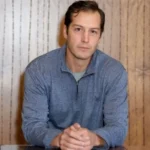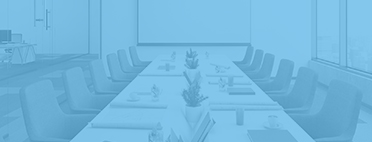
Table of Contents:
What’s An Echo
Echo Causes
How to Get Rid of Echoes
When you were a kid, you might have enjoyed shouting your name into an empty room to hear it bounce back. Now, however, having an annoying echo in your house can be a problem. It can be distracting and can make phone calls or videoconferences more challenging.
If you like to record audio, whether it’s a podcast or a quick note to yourself, an echo can interfere. In some cases, echoing rooms can make it hard to watch TV or even have a conversation. You might be playing music, chatting with someone or turning up the TV when you hear the noise reverberating back at you. Or maybe you accidentally drop something and the clatter seems to amplify itself. When every little sound you make bounces through your room, you might start feeling like you have to tiptoe around to keep things quiet.
If it seems like everyday noises sound extra loud and echo back at you, try exploring ways to adjust the acoustics in your room so that you can get clearer sound quality.
What Is an Echo?
An echo occurs when sound waves bounce off hard surfaces, such as walls, ceilings and floors. They are most common in large, empty rooms. However, they can happen in smaller spaces, too, if there are enough hard surfaces to bounce off of. If you have two hard surfaces close together, sounds can bounce back and forth between them, blurring the sound.
View this post on Instagram
What Are the Causes of the Echo in a Room?
Echoing happens when sound waves hit surfaces in your room. When you produce a sound — or something you’re using does — the waves bounce off hard surfaces like ceilings, walls and floors and create the reverberations you hear.
As they cross the room and change direction when they hit walls or other surfaces, the sound waves create delayed or muffled sounds that are hard to distinguish. These noises can be distracting when you’re trying to talk to someone or listen to something. Luckily, you can reduce echo with some easy, strategic setups in your room.
How to Get Rid of Echoes In a Room
Avoiding echoes in your house is possible whether you are building a new home or renovating. You can reduce the risk of echoes by avoiding parallel walls, open layouts, wood floors, tall ceilings and large rooms, all of which can exacerbate echoes.
If you already have a home with echoes and aren’t planning to renovate extensively, there are still several options. You’ll be surprised how effective some simple additions can be to reduce echo and improve your room’s acoustics. Try the following adjustments!
- Think soft materials. When a sound wave hits a hard surface, like wood or metal, it bounces back and creates an echo. However, soft materials can absorb sound and stop an echo cold. Lining spaces with soft surfaces helps reduce echoes, which is why sound booths are completely lined with acoustic foam and other soft materials. Consider covering windows with soft cloth curtains or shades.
- Fill the room. Lining your walls with bookcases and covering the floors with carpets helps to absorb the noise. More furnishings, especially upholstered items, also break up the routes sound waves can travel. This effect can reduce or even eliminate echoes.
- Add some new furniture. Do you have a new chair, a dresser, a beanbag or another fun addition that could make your room a little more cozy? Moving in another furniture piece can provide more soft surfaces for sound waves to hit before getting to a harder surface. With a few more objects in the room, you’ll find that there’s a lot less echo.
- Carpet your floor. Adding a carpet or rug to your floor adds a great touch to your room and functions as a sound-absorbing covering. With a soft surface on the ground, sound waves won’t be able to bounce off the floor anymore — and your floor will be extra comfortable to walk on, too.
- Cover your walls with the right material. Give yourself some space for creativity in your room and decorate your walls. Tapestries, canvases, prints and other fun pieces can help reduce echo and absorb sounds waves as they reach the walls, giving you a quieter space. In cases where you don’t want to introduce lots of fabric or cover your walls with bookcases filled with books, consider Vibra Block® Sound Deadening Material. This innovative peel-and-stick material helps you keep more floor space in each room while also reducing echoes and reverberations.
- Line walls and ceilings with acoustic panels. Acoustic panels offer soundproofing for echoes and sound absorption. They allow you to transform an echoing, loud room into a quiet space where you can relax or focus on work.
- Get anechoic acoustic foam. Originally designed for recording studios, acoustic foam has a ridged shape that helps it absorb high-, mid- and low-range frequencies. Foam panels are easy to put in place on ceilings or walls, and they can add a fun aesthetic to your room and reduce echo at the same time.
Banish Echoes With Soundproof Cow
With all kinds of easy and practical ways to reduce echo in your room, you’ll enjoy better acoustics in no time. At Soundproof Cow, we’re all about creating great sound quality in any space.
Soundproof Cow has a range of soundproofing solutions for your home. We even have products designed especially for echo reduction, like our Udderly Quiet® Class A™ Anechoic Acoustic Foam. Another option is the economic Echo Absorber™ Acoustic Panel, which is made from recycled fabric and designed to address echoes in spaces of any size.
Soundproof Cow can help you enjoy the peace and quiet you deserve. We even offer honest, no-bull advice about soundproofing and echo reduction. Just call us at 1-866-949-9269 or contact us to find out more about your best options. We’re here to help you find the right acoustics solution for your room.
Learn More About Managing Echoes













